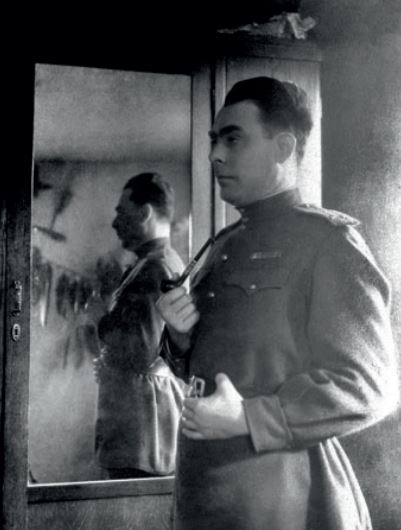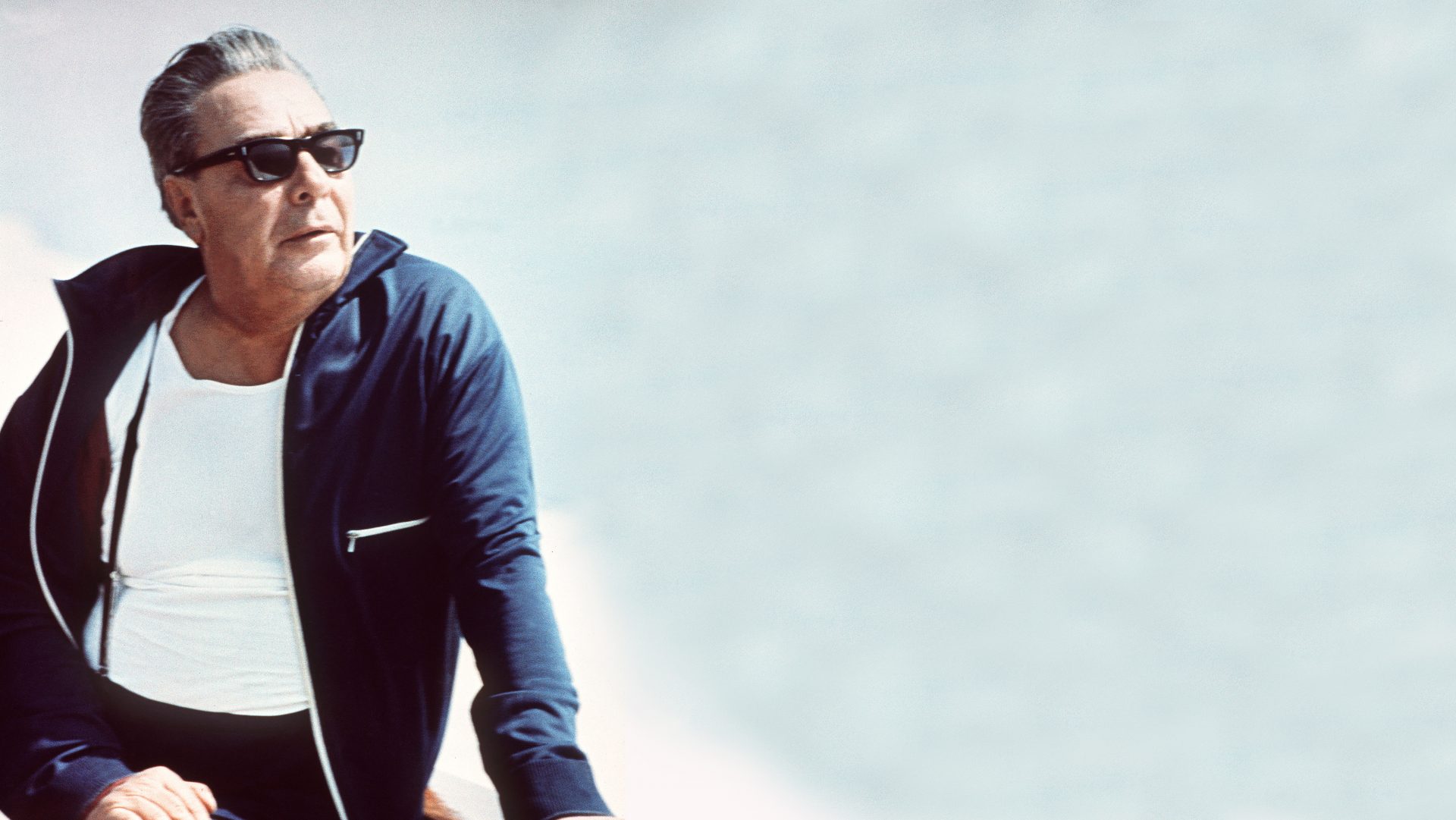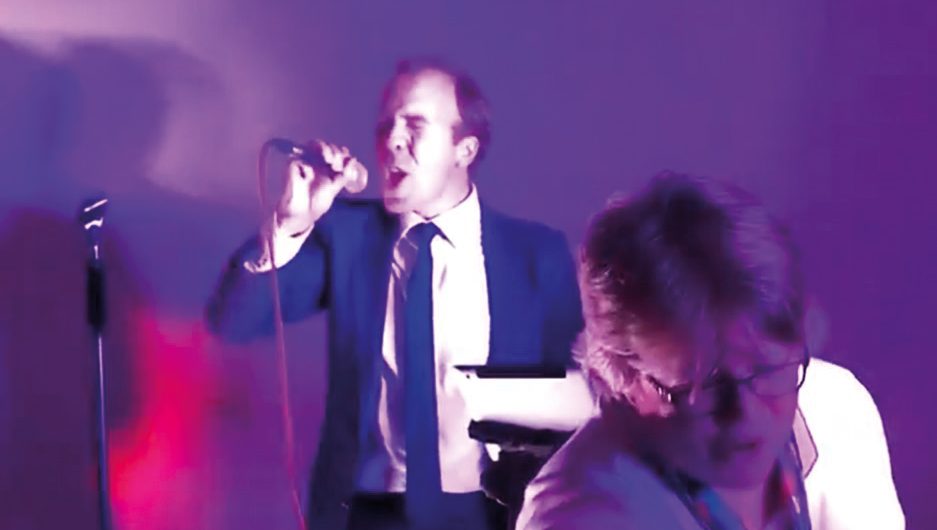Those who remember Leonid Brezhnev’s 18-year rule of the Soviet Union from 1964 to his death in 1982 see a grey, bloated apparatchik in a general’s uniform, his chest festooned with medals, his expressionless face staring into space.
But it was only after 1975 that such images of an infirm Brezhnev, barely able to stand, first flickered over television screens the world over. As a younger man after the Second World War, aged a little under 40, or even when he took office in 1964, in his late 50s, the tall, slim character with bushy eyebrows was considered not just attractive, but the party’s great hope. He himself attached great importance to a well-groomed appearance and impeccable suits.
Brezhnev was not just a heart-throb for the ladies; his good looks were also important to his political career. Stalin is said to have only noticed the young Brezhnev due to his stately physique. His trademark was his dark, bushy eyebrows, which earned him the popular nickname brovenosets (‘brow cruiser’), in allusion to the almost identical Russian term for ‘battle cruiser’, bronenosets.
But there is more to the perception of Brezhnev that is in need of correction: not only was he photogenic, he was also a talented performer who in his youth had wanted to become an actor. He loved to stand on a chair and cite his favourite poet Sergei Yesenin, and indeed generally enjoyed the conviviality of a large group. Even after 1964, he accompanied his comrades to football and hockey stadia, following his favourite football team, CSKA, the ‘Central Army Sports Club’, while most members of the Presidium were Spartak supporters. Brezhnev was a passionate hunter and loved fast cars, but also had a passion for breeding pigeons and liked to play dominoes with his employees. He regularly read the satirical magazine Krokodil, had his barber tell him the latest – anti-Soviet – jokes and could spend hours listening to the music of Leonid Utesov, who sang both jazz and Soviet romances.
It is as this conflict between amateur dramatics and the Cold War, between comradeship and an unchallenged 18-year reign, between a soft spot for controversial jokes and the persecution of dissidents, between the virility of his early years and his physical decline after 1975 that Brezhnev’s life story must be told.
This complexity is also mirrored by a photo Brezhnev took himself during the Second World War, using a self-timer, presumably with a looted German Rolleiflex camera. Standing in front of a mirror, he adopted a typical pose of Stalin’s, in high-necked battle dress, his hair swept back and his hand holding a pipe, Stalin’s trademark. It is an irritating picture, since it leaves so much open to interpretation, indeed even to speculation that it was not so much homage to Stalin as mocking him – a very dangerous undertaking at the time.
What is clear from his photograph is his penchant for acting and self-presentation. It goes without saying that he kept this picture under lock and key and that it was never published. It expresses his entire ambiguity, for in the mirror we see him as two people in the interplay of shadow and light. It reveals how he could nonchalantly pose before the camera even in hard times like the war, that he enjoyed uniforms, and that he grappled with the Stalin phenomenon – a conflict that would accompany him throughout his life.
Private photographs from later years show a vital, dynamic Brezhnev who liked to laugh – something that was soon forgotten, at the very latest after his death in 1982. As his photographer Vladimir
Musael’yan told me, Brezhnev was not only very photogenic, but also understood the power of images. He was the first Soviet party leader to have a personal photographer; from 1969 onwards, Musael’yan accompanied him everywhere and advised him on selecting the right photographs.
In 1971 Brezhnev invited West German president Willy Brandt for a weekend in Crimea. Critics of Brandt’s new Eastern Europe policy were particularly alarmed that he appeared in casual clothing, went on a boat trip with Brezhnev and finally went swimming with him in the Black Sea and a seawater pool. He was thus performing, they said, a ‘political striptease’ for Brezhnev. Fortunately, the press did not discover what Brezhnev told his photographer Musael’yan: he had lent Brandt a pair of swimming trunks.

Since the public were excluded, the only thing to go on was the photos showing the two men talking animatedly, smoking, posing with a female reporter, taking a boat trip, bathing together and clearly getting on splendidly. Diplomatically, the bathing holiday in Crimea might have been something of a curiosity, but Brezhnev was probably right when he said it was a “historically important encounter” that would go down in “European history”. The trip pursued a strategy of glasnost that was as simple as it was effective: if removing jackets and ties was an unusual thing to do in 1971, appearing in swimming trunks emphatically demonstrated that this was a meeting between two men who had nothing to hide from each other.
Only six weeks later, Brezhnev embarked on his first state visit to the West, to French president Georges Pompidou. It was crucial to present himself correctly to the Western public right from the start and to send the message that he was not a dull apparatchik.
As with his idea for the bathing weekend with Brandt, he thus departed from the norm: after thorough consultation with his photographer Musael’yan on which photo to send the French press ahead of the visit, he opted for a remarkable image showing him in sunglasses, a blue tracksuit and a white T-shirt, nonchalantly leaning against the side of his yacht off Crimea.
He himself said of the photo, “I look like Alain Delon.” He could not have made it any clearer that he wanted to appear Western, loose, attractive and ‘cool’
Extracted from Brezhnev: The Making on a Statesman (I.B. Tauris) by Susanne Schattenberg, translated by John Heath.



